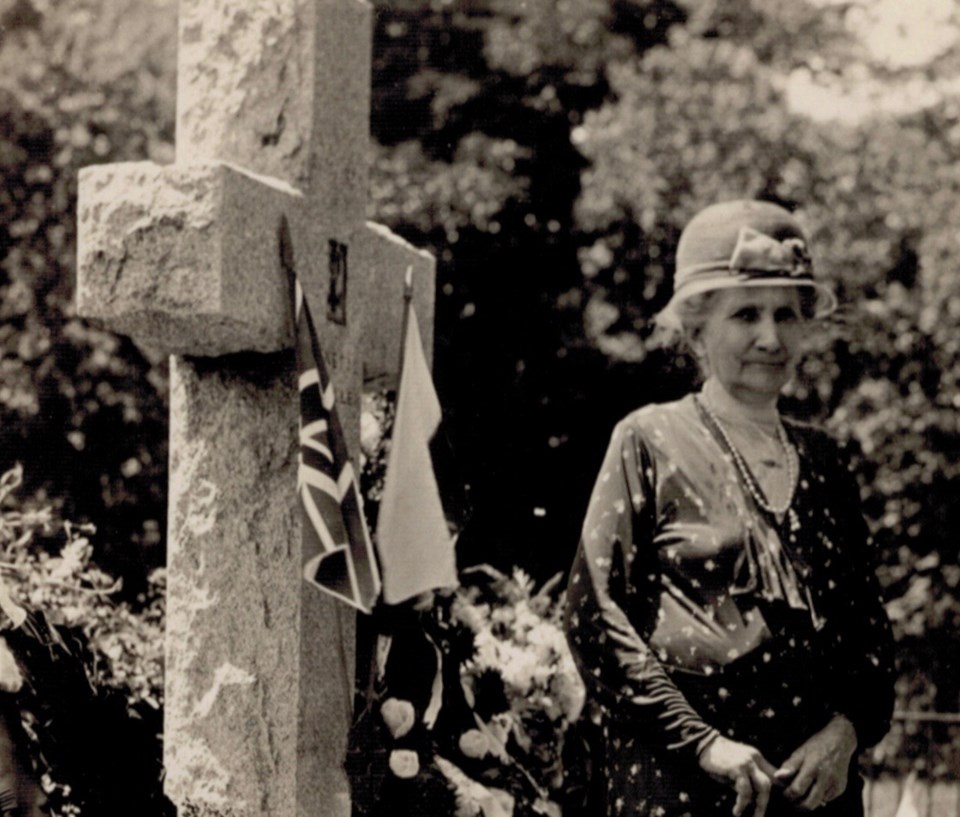Elizabeth Ascher, the woman best-known for looking after Polish soldiers who were training in Niagara-on-the-Lake during the First World War, will be honoured at St. Mark’s Church Sunday.
Historian and archivist Donald Combe said the conversation leading up to this event began about 10 years ago, when two Polish gentlemen came upon his research of Ascher.
They want her recognized for the relief supplies she sent back to Poland during the war, he said.
Buried in St. Mark’s Cemetery, her stone marker on her grave reads: “In loving memory of Elizabeth C. Asher 1869-1941. Awarded
by the Polish Government for services rendered. Erected by Polish Army Veterans Auxiliary Post 1.”
When Combe was writing his book, Stones, Saints and Sinners, with Fred Habermehl, they came to the conclusion her last name was misspelled, and she was a member of the Masters family, in whose plot she is buried.
She was the sister of Joseph Masters, who wrote for the Niagara Advance, the local newspaper of the day. She had married an American soldier, and when he was killed in Cuba, she began writing for the Buffalo Evening News. She later became a reporter for the St. Catharines Standard and also contributed to the Advance.
In another of their books, Searching for Dorothy, they wrote: “Like many others in small towns, Elizabeth was part of several organizations. She was a member of the Newark Chapter of the Independent Order of the Daughters of the Empire and Regent for 12 years, as well as a member of the Lincoln Military Chapter of St. Catharines. She joined the Niagara Historical Society in 1896 and became secretary, assistant curator and executive member. She was one of nine women who organized the Hospital Aid in 1920. She was on the executive of the Red Cross and a member of the Group Committee of the Boy Scouts.”
Her story, well-known in NOTL, includes her aid to the Polish Blue Army, including tending sick soldiers during a 1918 outbreak of Spanish influenza in Camp Niagara.
“At the request of the Niagara Historical Society of the time,” as explained in Searching for Dorothy, “Elizabeth Ascher wrote a detailed account of this period in her life during which she stepped into the breach to do what she could for both the Polish soldiers in her town, and the relief of Poland itself.”
Each year in June when Polish veterans come to NOTL to pay their respects to the soldiers who died in town and are buried in St. Vincent de Paul Cemetery — a well-attended ceremony locally — they also visit the burial place of this heroine of the Polish soldiers, said Combe.
The two men who approached Combe about 10 years ago, Roman Baraniecki and Andrew Kawka, wanted to gather more information about Ascher for their research.
Members of the Polonia Canadian Institute for Historical Studies, and their discussion of “this extraordinary lady,” Combe said, led to the placing of the monument that will be celebrated at St. Mark’s Sunday, May 26 at 10:30 a.m.
